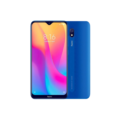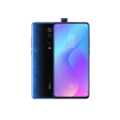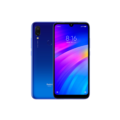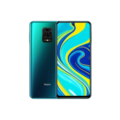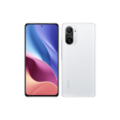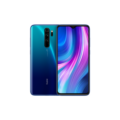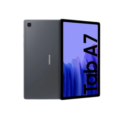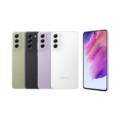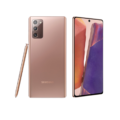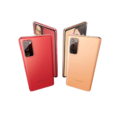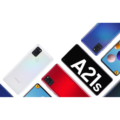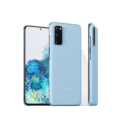Redmi Note 9 Harga Malaysia
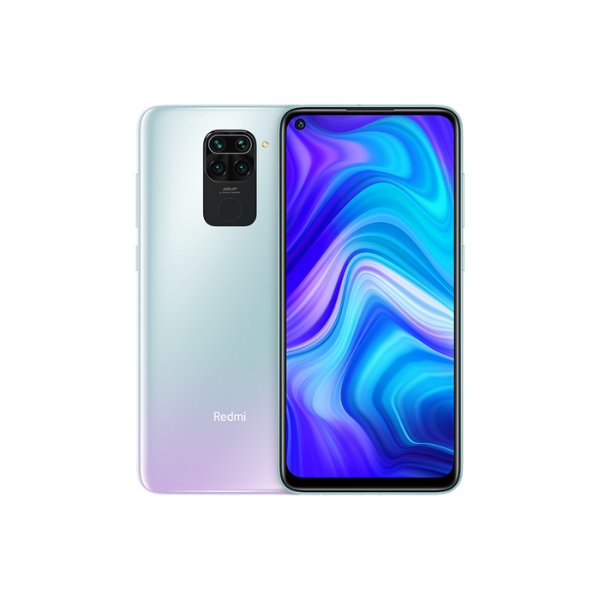

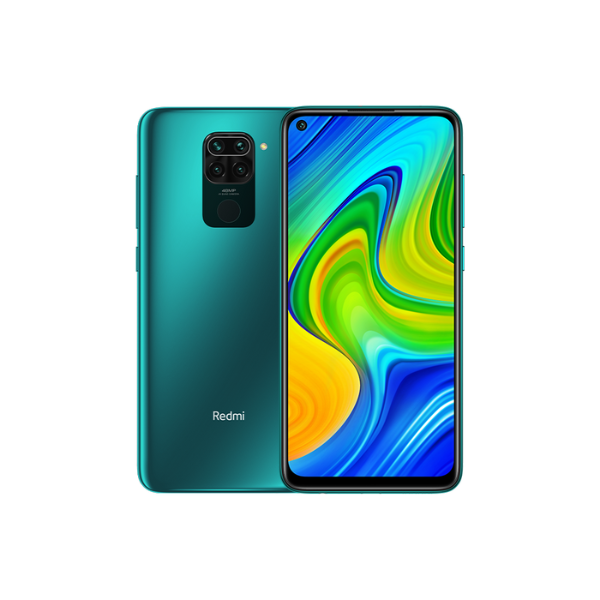
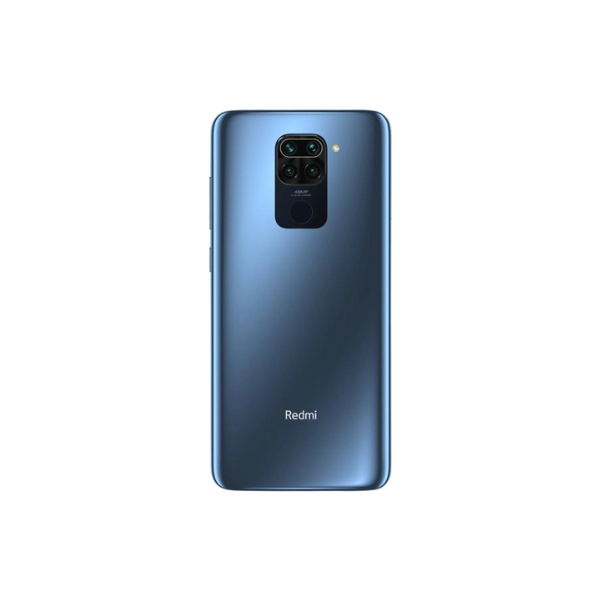
- CPU: MediaTek MT6769Z Helio G85 (12nm)
- RAM: 3 GB, 4 GB, 6 GB
- Storage: 64 GB, 128 GB
- Display: IPS LCD
- Camera: 48 MP Quad Camera
- OS: Android 10, MIUI 12.5 E
- AnTuTu Total Score: 205.946 (v8)
Redmi Note 9 Harga Malaysia Spesifikasi Malaysia
General
| Device Type | Smart Phone |
| Model | M2003J15SC, M2003J15SG, M2003J15SS |
| Announced | 30 April, 2020 |
| Released | 12 May, 2020 |
| Status | Available |
| Price | RM433 - RM546.45 |
Design
| Type <strong>Design Type</strong> called form factor refers to a mobile phone's size, shape, and style as well as the layout and position of major components of phone. There are three major form factors seen in mobile phones => bar phones, folding phones and sliding phones. | Bar |
| Dimensions | 162.3 x 77.2 x 8.9 mm (6.39 x 3.04 x 0.35 in) |
| Weight | 199 g (7.02 oz) |
| Body Type | Glass front (Gorilla Glass 5), plastic frame, plastic back |
| Protection | Water-repellent coating |
| Colors | Forest Green, Midnight Grey, Polar White |
Network
| 4G Network | 1, 2, 3, 4, 5, 7, 8, 20, 28, 38, 40, 41 |
| SIM <strong>SIM</strong> (Subscriber Identity Module) is a small card that contains mobile network subscriber's account information. This allows the phone using the card to attach to a mobile network. The SIM card is most commonly associated with GSM and UMTS mobile networks. Moving a SIM card from one phone to another allows a subscriber to switch mobile phones without having to contact their mobile network carrier. SIM cards can also be used by a phone to store limited amounts of data, such as phone numbers and text messages. | Nano SIM |
| Dual SIM | dual stand-by |
Display
| Display Type <strong>Display Technology => </strong> A number of display technologies and types used in mobile phones => TFT (Thin Film Transistor), IPS (In-Place Switching), OLED (Organic Light Emitting Diode), AMOLED (Active-Matrix Organic Light-Emitting Diode), Super AMOLED (an even advanced version of AMOLED), Resistive Touchscreen (Resistive touchscreens contain two layer of conductive material with a very small gap between them which acts as a resistance), Capacitive Touchsceen (Capacitive touchscreen technology consists of a layer of glass coated with a transparent conductor) | IPS LCD |
| Size | 6.53 inches, 104.7 cm2 (~83.5% screen-to-body ratio) |
| Resolution | 1080 x 2340 pixels, 19.5:9 ratio |
| Display Colors <strong>Display Colors</strong> is refers to the number of different shades of colors that the screen is capable of displaying => 64K colors, 256K colors and 16 million colors, Obviously 16M is highest available range of colors and better than others. | 16 Millions Colors |
| Pixel Density <strong>Pixel Density (PPI)</strong> is refers to the concentration of pixels on a particular display, measured in pixels per inch (ppi). Pixel density is calculated by dividing the diagonal pixel resolution of a display by its diagonal size, higher pixel density better display quality. | (~395 ppi density) |
| Touch Screen | Yes, Multitouch |
| Display Protection <strong>Display Protection => </strong> Gorilla Glass is a special alkali-aluminosilicate glass shield with exceptional damage resistance that helps protect mobile displays from scratches, drops, and bumps of everyday use, It is always better to go for a smartphone with Gorilla Glass for that added protection and peace of mind. | Corning Gorilla Glass 5 |
| Features | 450 nits (typ) |
Camera
| Rear Camera <strong>Camera</strong> is able to capture photographs and usually videos, The most important characteristics of a camera are the resolution (measured in megapixels), lens focus type (fixed or automatic), higher megapixel cameras are known to capture higher quality photos, but not always a good measurement of the photos quality. |
Quad Camera 48 MP, f/1.8, 26mm (wide), 1/2.0&quot;, 0.8µm, PDAF 8 MP, f/2.2, 118˚ (ultrawide), 1/4.0&quot;, 1.12µm 2 MP, f/2.4, (macro), AF 2 MP, f/2.4, (depth) |
| Front Camera | 13 MP, f/2.3, 29mm (standard), 1/3.1&quot;, 1.12µm |
| Image | 1080p |
| Video | 1080p@30fps |
| Camera Features | LED flash, HDR, panorama |
Software
| Operating System <strong>OS => </strong> Every computer system run on a base software called Operating System (OS). Operating System controls all basic operations of the computer (such as smartphone, PDAs, tablet computers and other handheld devices). The Operating System allows the user to install and run third party applications (apps), apps are used to add new functionality to the device. | Android 10, upgradable to Android 11 |
| User Interface <strong>UI</strong> or user interface of a device is the look and feel of the on-screen menu system. How it works, its color scheme, how it responds to button presses, all of these things are part of the user interface. | MIUI 12.5 E |
Hardware
| Chipset <strong>Chipset</strong> is a group of integrated circuits designed to perform one or a more dedicated functions, often with real time computing constraints, Popular smartphones are equipped with more advanced embedded chipsets that can do many different tasks depending on their programming. | MediaTek MT6769Z Helio G85 (12nm) |
| CPU <strong>CPU</strong> (Central Processing Unit) mostly known as processors, CPU processes instructions in order to carry out certain functions that make your device operate properly. Processors are often described as the brain of computers, smartphones and tablets, Smartphones and tablets rely on processors to carry out their every task, Processors are an incredibly important factor in selecting any type of computing device, including your smartphone. | Octa-core (2x2.0 GHz Cortex-A75 & 6x1.8 GHz Cortex-A55) |
| GPU <strong>GPU</strong> (Graphics Processing Unit) is a single-chip processor designed to rapidly manipulate and alter memory to accelerate the creation of images in a frame buffer intended for output to a display, This includes things such as lighting effects, object transformations, and 3D motion. | Mali-G52 MC2 |
| RAM (Memory) <strong>RAM</strong> (Random Access Memory) is a type of computer memory that can be accessed randomly, any byte of memory can be accessed without touching the preceding bytes that allows information to be stored and accessed quickly from random locations. RAM is the most common type of memory found in computer systems, smartphones, tablets and other electronic devices. | 3 GB, 4 GB, 6 GB |
| Internal Storage <strong>Internal Storage</strong> is a data storage space (flash memory) mostly used in smartphones, tablets and other electronic devices where operating system, apps, music, photos, videos, files and other user data Is stored. | 64 GB. 128 GB |
| Card Slot <strong>Memory Card Slot</strong> is a special slot for inserting a memory card. Memory cards allow you to expand the phone's built-in memory, A memory card (sometimes called a flash memory card or a storage card) is a small storage medium used to store data such as text, pictures, audio, and video, for use on small, portable or remote computing devices such as mobile phones, mp3 players, digital cameras. | microSDXC (dedicated slot) |
| Sensors <strong>Sensors</strong> are electronic components that detects and responds to some type of input from the physical environment. The specific input could be light, heat, motion, moisture, pressure and location, The output is generally a signal that is converted to use in computing systems, a location sensor, such as a GPS receiver is able to detect current location of your electronic device. |
Fingerprint (rear-mounted), accelerometer, gyro, proximity, compass |
Battery
| Battery Type <strong>Battery Type => </strong> Cell phones run on various kinds of batteries depending on the manufacturer, phone size or shape and features. There are basically four types of cell phone batteries => Lithium Polymer, Lithium Ion, Nickel Metal Hydride and Nickel Cadmium. | Li-Poly (Lithium Polymer) |
| Placement | non-removable |
| Capacity <strong>Battery Capacity</strong> is a measure (typically in Amp-hr) of the charge stored by the battery, and is determined by the mass of active material contained in the battery. The battery capacity represents the maximum amount of energy that can be extracted from the battery under certain conditions. | 5020 mAh |
| Charging | 18W wired, 9W reverse wired |
Connectivity
| Bluetooth <strong>Bluetooth</strong> is a wireless communications technology for exchanging data between mobile phones, headsets, computers and other network devices over short distances without wires, Bluetooth technology was primarily designed to support simple wireless networking of personal consumer devices. | 5.0, A2DP, LE |
| Wi-fi <strong>Wi-Fi</strong> is a popular wireless networking technology using radio waves to provide high-speed network connections that allows devices to communicate without cords or cables, Wi-Fi is increasingly becoming the preferred mode of internet connectivity all over the world. | Wi-Fi 802.11 a/b/g/n/ac, dual-band, Wi-Fi Direct |
| Wi-fi Hotspot | |
| USB | USB Type-C 2.0 |
| GPS <strong>GPS</strong> The Global Positioning System is a satellite-based radio navigation system, GPS permits users to determine their position, velocity and the time 24 hours a day, in all weather, anywhere in the world, In order to locate your position, your device or GPS receiver must have a clear view of the sky. | GPS, GLONASS, GALILEO, BDS |
| NFC <strong>NFC</strong> (Near field communication) is a set of standards for smartphones and similar devices to establish peer-to-peer radio communications with each other by touching them together or bringing them into proximity, usually no more than a few inches. | |
| Wireless Charging <strong>Wireless Charging</strong> (Inductive Charging) uses an electromagnetic field to transfer energy between two objects. This is usually done with a charging station. Energy is sent through an inductive coupling to an electrical device, which can then use that energy to charge batteries or run the device. | No |
Media
| Loudspeaker | Yes |
| Handsfree | 3.5mm jack |
Redmi Note 9 adalah telefon pintar serba boleh dari Xiaomi yang terletak dalam kelas pertengahan, dan peranti ini dirujuk sebagai “Quad Camera Hotshot.” Ia juga merupakan penerus kepada keluarga Redmi Note yang “legenda” dan diletakkan dalam kelas harga yang berpatutan.
Dengan lebih berpatutan, Xiaomi Redmi Note 9 mempunyai daya tarikan tersendiri, terutama dalam segmen harga ini. Dilengkapi dengan beberapa peningkatan kecil di sana-sini, ia membuat siri ini menjadi lebih baik.
Selain beberapa peningkatan dalam sektor perkakasan, Xiaomi Redmi Note 9 juga membawa ciri kamera yang tidak dimiliki oleh semua telefon pintar flagship. Jadi, apa yang ditawarkan dalam telefon pintar ini yang membawa nama besar keluarga Redmi Note? Inilah ulasannya.
Reka Bentuk
Dalam Redmi Note 9, Xiaomi menggunakan reka bentuk baharu, dengan reka bentuk kamera utama yang dibuat simetri dan terletak di tengah. Xiaomi mendakwa bahawa ia memberikan kesan telefon flagship walaupun ia berada dalam kategori pertengahan.
Tidak perlu risau tentang calar mudah, kerana kedua-dua kaca hadapan dan kamera belakang dilindungi oleh Corning Gorilla Glass 5. Pengimbas cap jari terletak tepat di bawahnya.
Redmi Note 9 mempunyai badan utama yang terbuat daripada polikarbonat dengan lapisan Corning Gorilla Glass 5 pada skrin. Xiaomi sendiri menyebut reka bentuk telefon pintarnya sebagai “reka bentuk bergaya dan simetri”.
Untuk pilihan warna, Redmi Note 9 mempunyai tiga pilihan warna, salah satunya adalah Redmi Note 9 Putih, kemudian ada lainnya iaitu Gray tengah malam dan Hijau Hutan.
Paparan
Melepaskan reka bentuk butiran air terjun, Redmi Note 9 membawa DotDisplay dengan skrin IPS 6.53 inci. Dengan resolusi HD+ penuh dan nisbah 19.5:9, mencapai semua bahagian skrin dengan satu tangan akan terasa sedikit sukar.
Untungnya, Xiaomi menyediakan mod satu tangan (one-handed mode) melalui antara muka MIUI yang dibawa. Tahap kecerahan maksimum adalah 450 nits, cukup untuk digunakan di luar. Reproduksi warna adalah baik, dan pengguna boleh memilih untuk lebih neutral atau lebih berwarna melalui menu tetapan.
Kamera
Pengecam utama mempunyai resolusi tinggi 48MP f/1.79, dengan kamera sudut ultra lebar 8MP dengan apertur f/2.2 dan dua lensa dengan sensor 2MP dan apertur f/2.4 masing-masing untuk makro dan pengesan kedalaman.
Spesifikasi Redmi Note 9 pada kamera makro mempunyai julat fokus antara 2cm hingga 10cm, sesuai untuk anda yang suka mengambil foto close-up objek.
Sementara itu, pada skrin terdapat lensa selfie 13MP dengan apertur f/2.3 dan panjang fokus 29mm. Dengan spesifikasi kamera ini, ia cukup berkebolehan menghasilkan foto berkualiti baik dari segi pengambilan foto close-up dan pada waktu malam.
Perisian
Redmi Note 9 ini berjalan dengan MIUI 11 berdasarkan Android 10, dengan pelbagai sensor yang agak lengkap. MIUI 11 memberikan antaramuka yang agak bersih dengan banyak penyesuaian yang tersimpan di dalam tetapan.
Ciri keselamatan termasuk pengimbas cap jari dan Face Unlock, dan menyokong konnektiviti 4G, WiFi: 802.11 a/b/g/n/ac, dan Bluetooth 5.0.
Prestasi
Xiaomi memutuskan untuk menggunakan cip MediaTek Helio G85 dengan seni bina octa-core, CPU mempunyai 2 inti Cortex A75 sehingga 2GHz dan 6 inti Cortex A55 untuk pemprosesan ringan.
Masih sama seperti siri G70 dan G80, cip ini menggunakan proses pembuatan 12nm. Digabungkan dengan kapasiti ingatan 4GB dan 6GB RAM dan 64GB dan 128GB storan dalaman.
Bateri
Dengan dimensi keseluruhan yang sedikit lebih besar, Xiaomi boleh memasang bateri dengan kapasiti lebih besar. Redmi Note 9 mempunyai bateri yang cukup besar pada 5,020 mAh, yang dikatakan boleh bertahan lebih dari dua hari. Apabila bateri habis, anda tidak perlu menunggu terlalu lama untuk mengisi cas.
Redmi Note 9 sudah menyokong cas pantas 18 watt melalui port USB-C. Sebagai gantinya, Xiaomi menyediakan pemalar dengan kuasa 22.5 watt. Mengisi cas satu jam sudah mencapai 46%, dua jam 85%, dan untuk penuh yang mengambil kira-kira tiga jam.
Harga
Harga Redmi Note 9 bagi pasaran Malaysia bermula dari sekitar RM433.00 untuk varian storan dalaman 64GB dan sekitar RM546.45 dengan storan dalaman 128GB.
Anda boleh melawat laman web rasmi di Mi Malaysia
Soalan Lazim
Adakah Redmi Note 9 akan mendapat kemas kini MIUI 12.5?
Ya. Redmi Note 9 adalah salah satu siri telefon daripada Xiaomi yang akan mendapat kemas kini MIUI 12.5 dengan kemas kini sistem keselamatan, peningkatan privasi pengguna, dan prestasi yang lebih baik.
Adakah terdapat pelabuhan jack headphone dalam Note 9?
Ya. Walaupun beberapa telefon terbaru disajikan tanpa pelabuhan audio 3.5mm, Redmi Note 9 masih mempunyai pelabuhan ini. Oleh itu, anda boleh menggunakan pelbagai peranti audio seperti headphone atau pembesar suara tanpa perlu menghidupkan Bluetooth.
Adakah Redmi Note 9 terbaik untuk permainan?
Bagus tetapi bukan yang terbaik. GPU ARM Mali-G52 yang digunakan mempunyai kelajuan jam hingga 1GHz, dan dilengkapi dengan ciri HyperEngine untuk meningkatkan pengalaman permainan keseluruhan, walaupun dengan tahap grafik yang tinggi.
Itulah ulasan mengenai Redmi Note 9 dari segi reka bentuk hingga harga di pasaran Malaysia.

